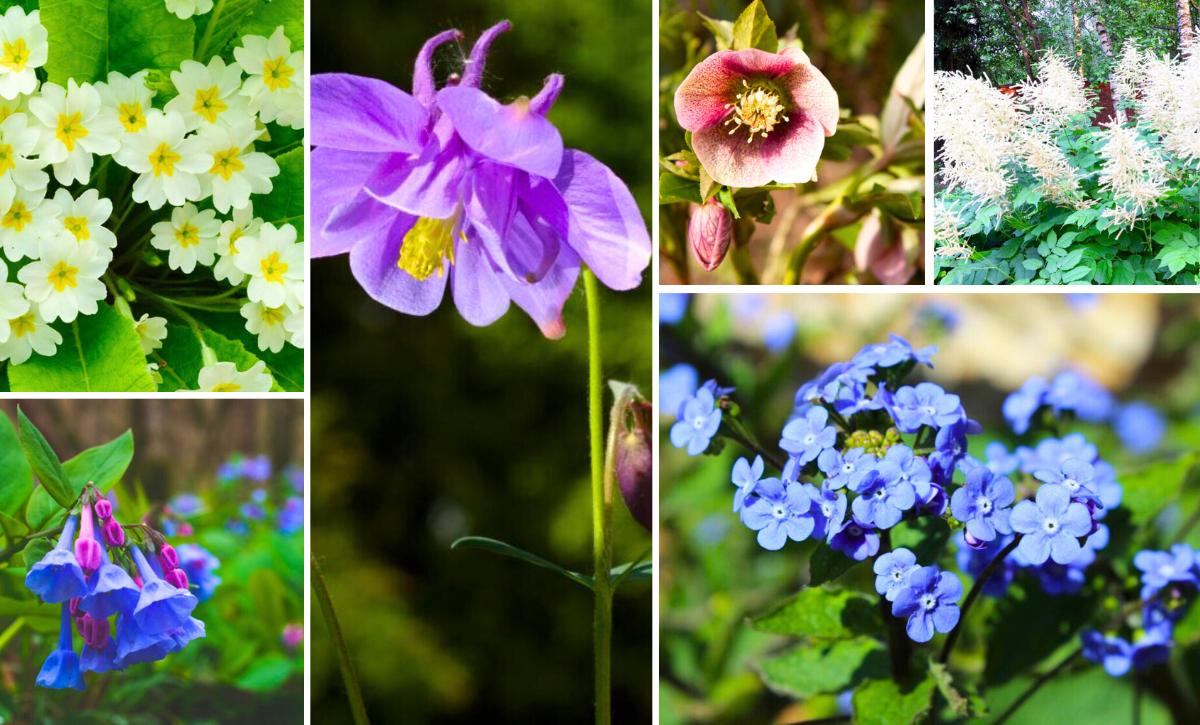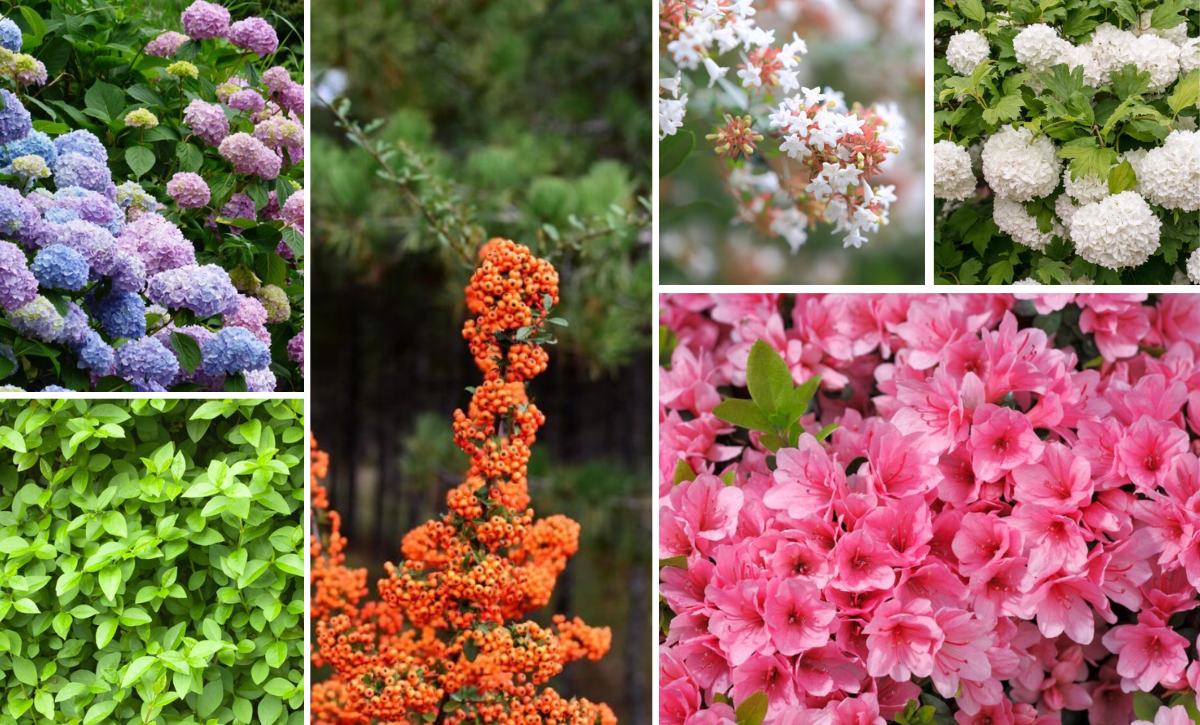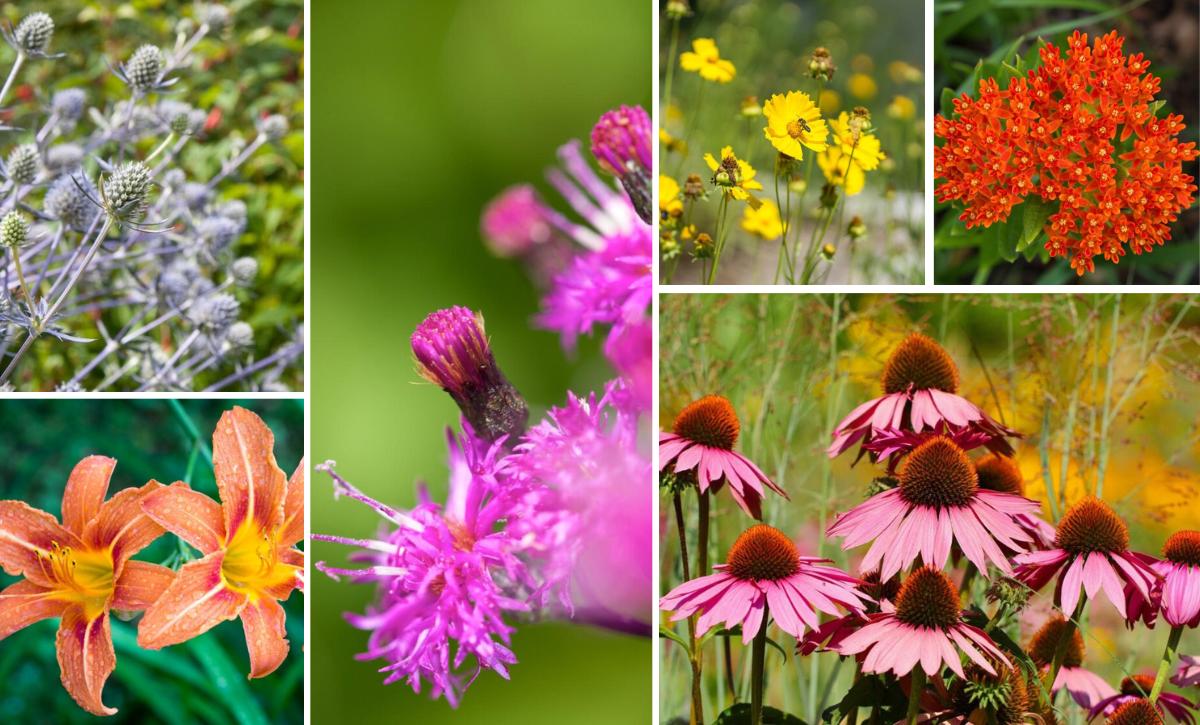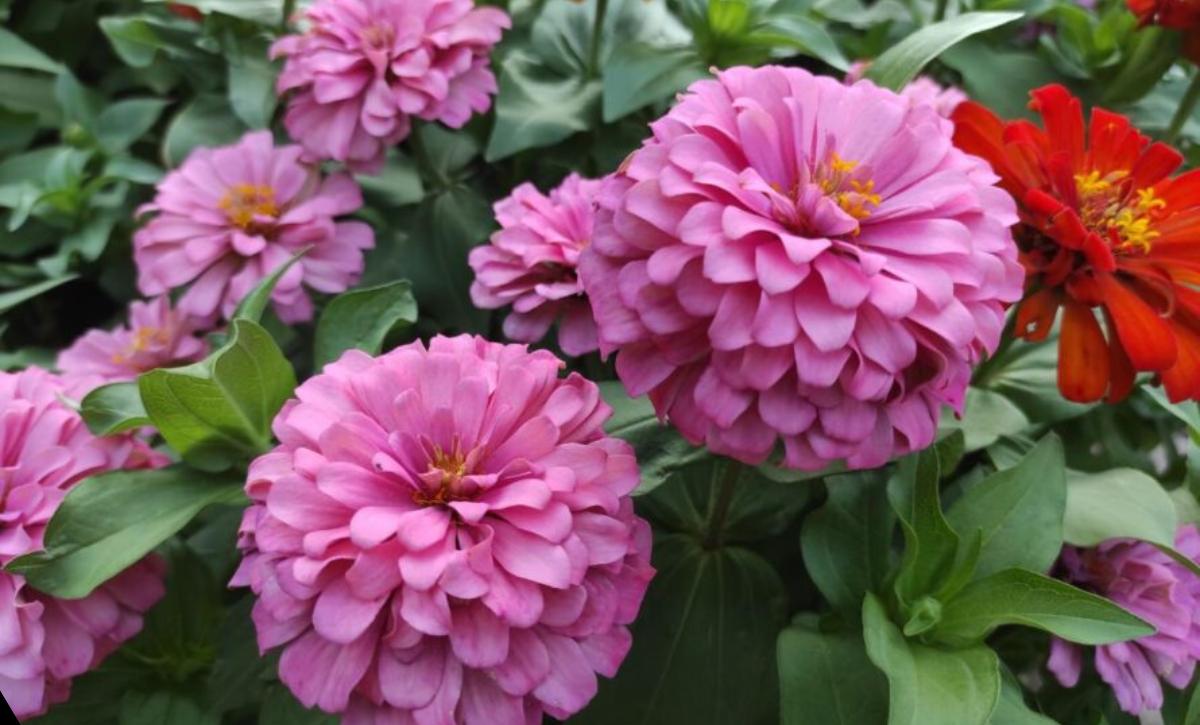I love Greek mythology, especially its immaculate characters and unending drama. However, I was shocked to find out that there’s a whole section dedicated to flowers!
Well, today, we’re going to focus on these flowers that you would find in ancient Greece. This article will discuss 15 different varieties of beautiful flowers, their significance in Greek mythology and history, and some basic requirements.
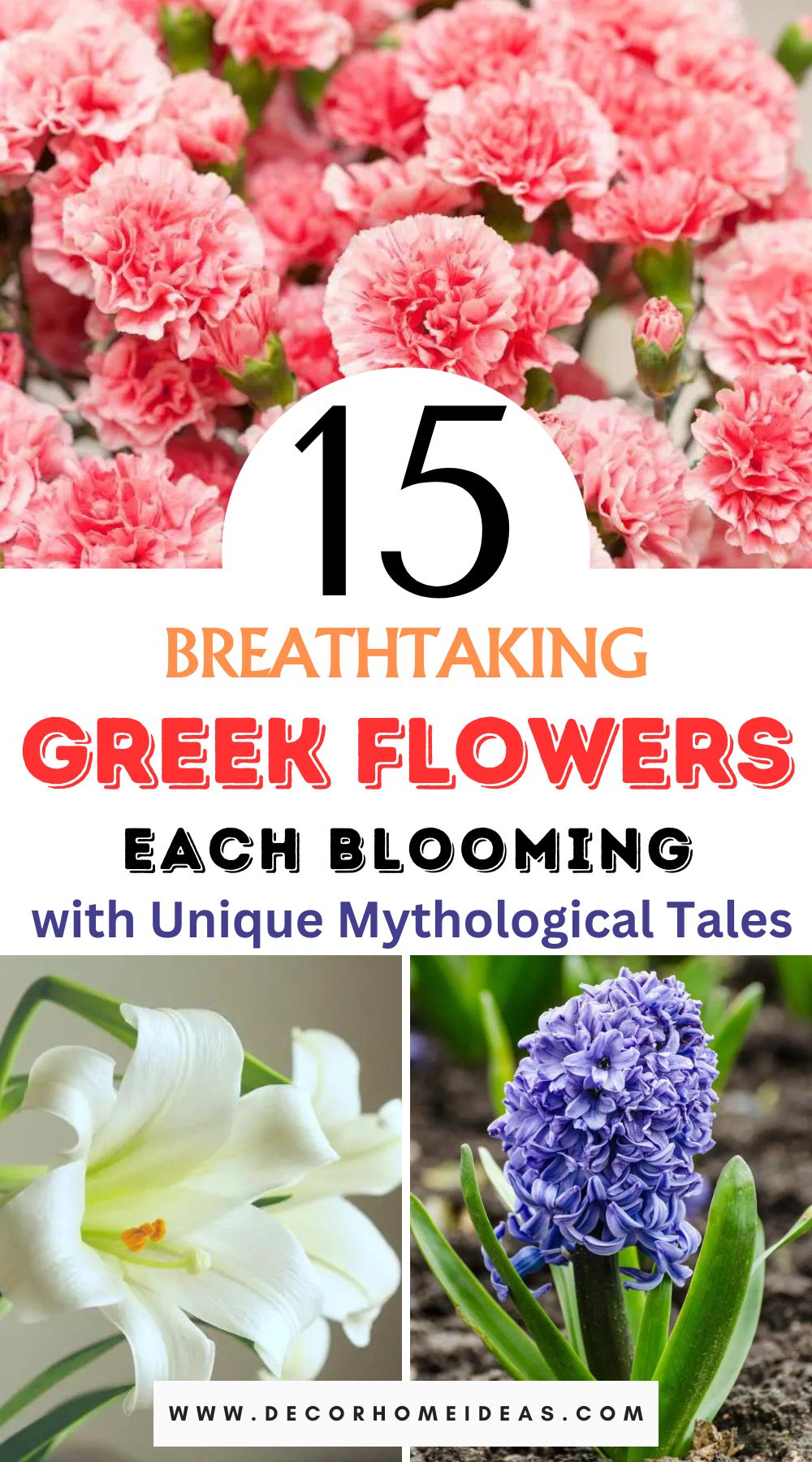
Let’s get started!
15 Greek Flowers Varieties
Even though the flowers we’re going to look into may not be native to Greece, they were still quite popular back then (and they still are!). You’ve probably come across the Greek myth about the Narcissus flower, which is one of the numerous stories in this peculiar universe of Greek heroes and anti-heroes, gods and goddesses.
Now, let’s take a quick break from our present world and immerse ourselves in this world of myths and gods as we learn about the remarkable flowers of that time!
1. Carnation
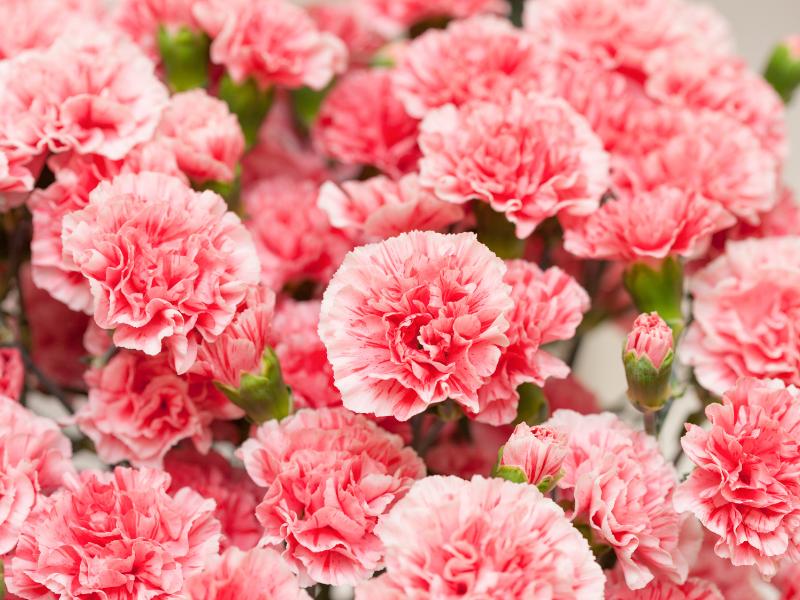
You can keep carnations in your flower vases for as long as you like, which is one of the main reasons the Greeks (and probably everyone else worldwide) adore them!
Here’s some general information regarding this flower:
Scientific name: Dianthus caryophyllus
Native habitat: The Mediterranean
Growth rate: Slow grower
Size: 30 – 75 cm (12 – 30 in) tall
Toxicity: Toxic
This plant’s scarlet, red, yellow, pink, or white flowers will elevate your space in ways you couldn’t imagine! Moreover, some species have combined colors, making the flower even more exceptional!
Plant your carnations in well-draining and fertile soil and place them in a sunny spot outside. Wait for the topsoil to dry before irrigating your flowers (at least once weekly), and by late spring, you’ll have a garden filled with beautiful carnation flowers.
The origin of carnations has numerous contrasting theories; we couldn’t focus on only one. Surprisingly, the first story doesn’t involve heartbreaking, horrid, or bloody scenarios, which is quite unique in regard to these myths, but it does focus on a significant feeling: jealousy.
Hera, the goddess of marriage and childbirth, had a lily as her flower. Zeus was jealous of Hera since he didn’t have his flower and, as a result, threw a lightning bolt at the lily. Carnations and thessaly, flowers as gorgeous and exquisite as lilies, began to appear.
The second myth we’ll discuss focuses on Artemis, the hunting goddess, and a failed hunt. Artemis blamed the shepherd for playing the wrong music on his flute as she conducted her hunt and went ahead to pop out his eyes. However, cold-heartedness wasn’t really in the goddess’s nature. She soon came to regret her actions, and some red carnations began to grow where the shepherd’s eyes had fallen.
2. Peony
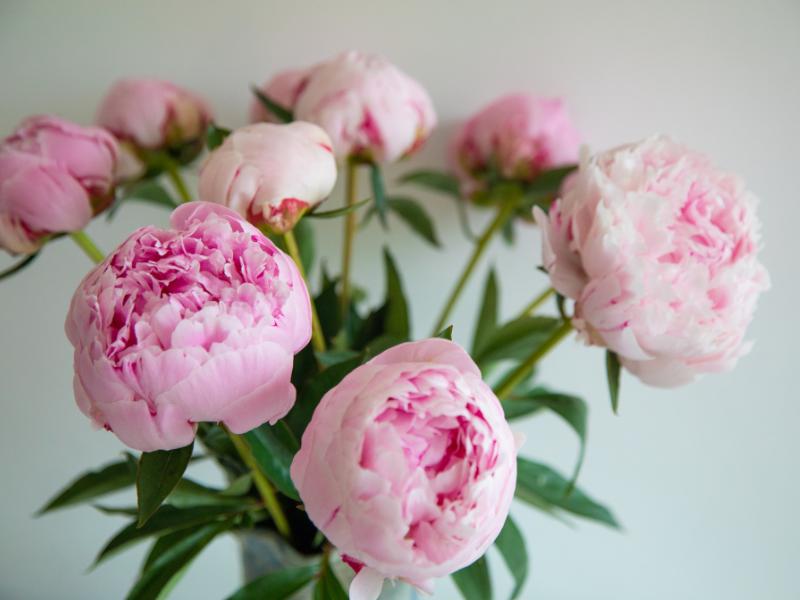
Peonies are popular worldwide, not just in Greece, and you can find them growing among numerous Italian flowers.
Here are some general details about this flower:
Scientific name: Peaonia
Native habitat: Asia, Europe, and the western part of North America
Growth rate: Slow grower
Size: Reaches a height and width of about 90 cm (3 ft)
Toxicity: Toxic
Peonies have remarkably beautiful red, pink, cream, or white flowers that will adorn your garden in spring and summer, giving it a Greek or Victorian ambiance that takes your garden back in time when Charles Darwin and Charles Dickens used to shape history with literature!
Peonies require a lot of sunlight to thrive, and you need to plant them in a fertile, well-draining medium. The soil must also be moist, which you can achieve by irrigating with 2.5 cm (an inch) of water weekly. Your peony needs these conditions to make it through the growth stages successfully.
Peonies have two Greek myths explaining their origin. The first one involves Asclepius, the healing god, and his student, Paeon. One day, the hero Hercules injured Hades, the god of the Underworld, using his arrow, and since gods aren’t used to being hurt or feeling pain, Hades decided to go to Mount Olympus to look for Asclepius.
Unfortunately, Hades couldn’t locate Asclepius, so he was forced to look for the next best alternative, Paeon. Paeon managed to extract a liquid from peonies’ roots and healed Hades. Just like any other god, Asclepius was infuriated by this and sought to kill Paeon, but Zeus intervened and turned Paeon into a flower.
The second myth about peonies talks about the detriments of love and beauty. Apollo was deeply amazed by the beauty, charm, and elegance of a nymph called Paeonia. However, Apollo had another partner at the time, Aphrodite (Hephaestus’ wife), who was enraged when she found out and turned Paeonia into a flower.
Quite ironic that the goddess did that, don’t you think?
3. Hyacinth
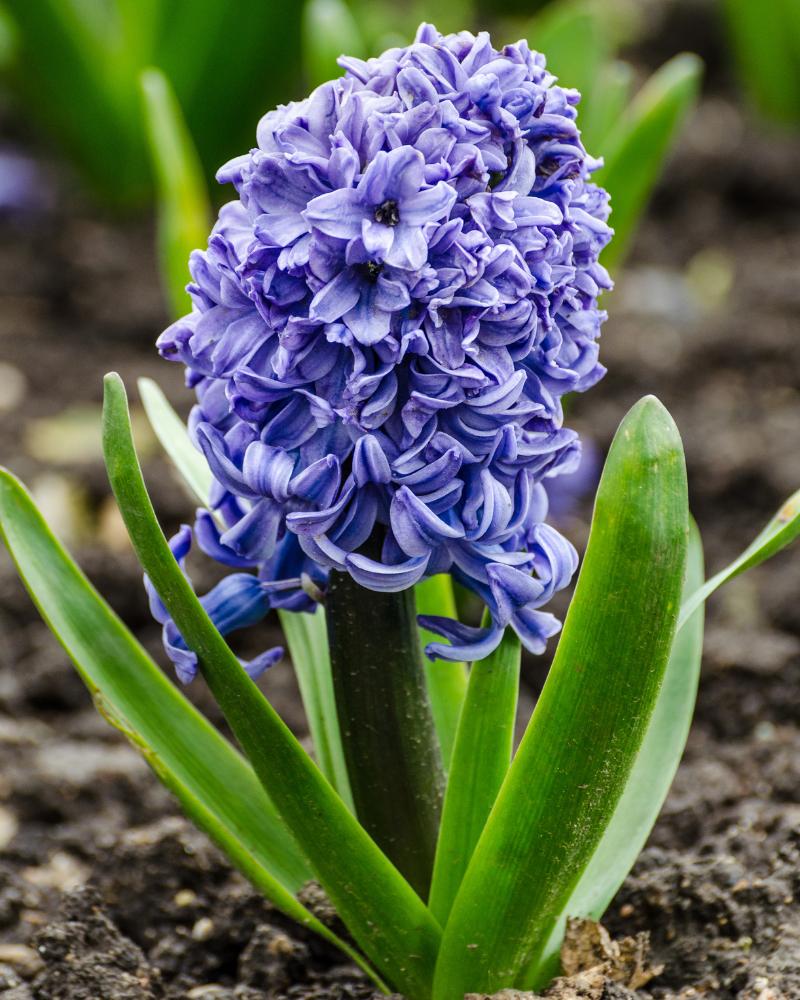
Hyacinth is a flower that you may find while walking in the streets of Athens, and it makes the list of popular star-shaped flower varieties. The flower is popular in many cultures worldwide.
Here are the general details:
Scientific name: Hyacinthus
Native habitat: The Eastern Mediterranean
Growth rate: Fast growing
Size: 25 cm (10 in) tall and 10 – 15 cm (4 – 6 in) wide.
Toxicity: Toxic
Hyacinth is a toxic flower, but its star-like flower cluster makes it popular among many gardeners worldwide. These flowers come in shades of yellow, red, white, blue, pink, lavender, and purple.
During spring, these beautiful flower heads will beautify your garden as long as you plant them in a place that receives 6 hours of sunlight daily. Also, you need to grow the flowers in well-draining soil, water them when the topsoil is dry, and amend the soil with compost to improve drainage and introduce some organic material.
In Greek mythology, Hyacinthus was a Spartan prince adored by many but a lover of the sun god Apollo. Others who admired him include a mortal named Thamyris, the god of the North wind, Boreas, and the god of the West wind, Zephyrus, but the prince chose Apollo.
Apollo taught Hyacinthus numerous things. One day, they were having a discus throwing competition to see who could throw it the furthest. When Apollo’s turn came, he threw the discus far away, and as Hyacinthus tried to catch it, it bounced off the ground and hit him in the head. According to a different myth, it states that Zephyrus intentionally blew the discus because he was jealous, ultimately leading to the demise of the young prince.
Hyacinthus died in the sun god’s arms, and, in remembrance, Apollo created a flower using his blood known as Hyacinth.
4. Daffodil
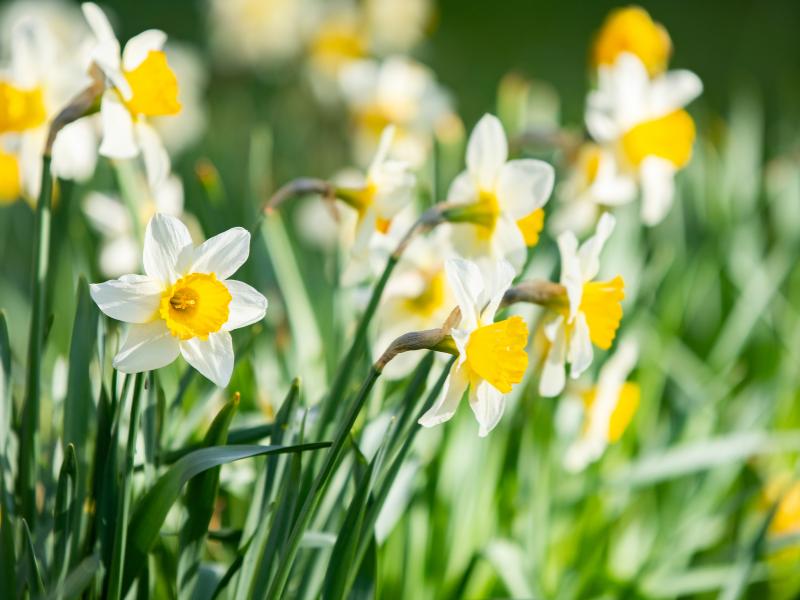
Daffodils, also known as Narcissus, have a very popular myth, which I’m sure we’re all familiar with. However, let’s look at some general information about this flower:
Scientific name: Narcissus
Native habitat: North Europe
Growth rate: Fat grower
Size: 5 cm (2 in) or 60 cm (2 ft); it varies with the species
Toxicity: Toxic
Daffodils can be white or yellow with pink, orange, yellow, or white trumpets, and you can find them in numerous lists concerning popular French flowers. Daffodils thrive in full sun exposure and well-draining soil. You need to frequently water them during the growing season and stop watering during their dormancy period, and you’ll be good to go! Before you know it, you’ll be having flowers all over.
Narcissus was a mortal in Greek mythology who had looks that even made the gods envious. According to the legend, a nymph named Echo fell in love with him, and one day, she decided to confess her undying love to him. Sadly, she was rudely rejected by the disgruntled Narcissus and ran to the forest, where she slowly withered away. Eventually, Echo turned into stones, repeating the passers-by’s words.
Nemesis, the revenge god, didn’t let this go unnoticed. The goddess made the mortal fall in love with his reflection in the pond, and Narcissus, deeply admiring his looks in trance, lost balance, fell into the water and drowned. A flower grew in the spot where Narcissus looked at his reflection, signifying stony-heartedness and self-centeredness.
5. Red Anemone
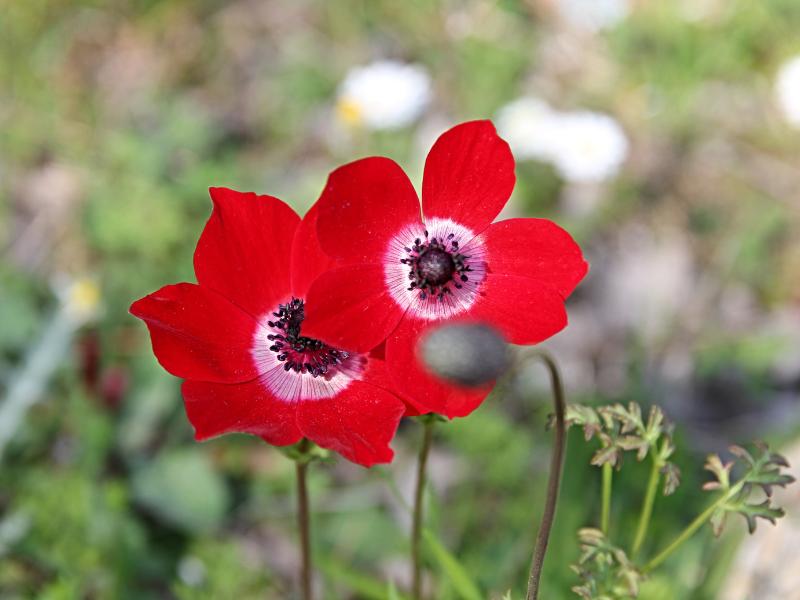
Get ready for another heartbreaking story as we learn about this red flower. But first, let’s have a look at its general information:
Scientific name: Anemone
Native habitat: Native to all subtropical and temperate regions, except Australia and Antarctica
Growth rate: Slow to moderate
Size: Can be 15 cm (6 in) or 120 cm (4 ft) tall and 60 – 90 cm (2 – 3 ft) wide, depending on the species
Toxicity: Toxic
You can find the red anemone in the list of poisonous plants, but our endearment to ancient Greek mythology and flowers transcends any venom out there!
This flower loves partial shade, so don’t expose it to too much sunlight. Plant it in a well-draining and fertile substrate and irrigate it deeply with 2.5 cm (an inch) of water weekly if there isn’t any rainfall.
In Greek, anemone is a word for windflower, a plant that narrates the story about Adonis’ death. Persephone, the queen of the Underworld, and Aphrodite, the goddess of love, loved Adonis. One fateful day, a wild boar attacked Adonis, making him cry out in agonizing pain. Aphrodite heard his cry for help, but when she found him, he was on the verge of death.
According to the myth, red anemones grew from where Adonis’ blood was stained. Another version says that white anemones were already growing in the area, but once the young man’s blood droplets touched their tender, pale petals, they turned red.
6. Orchid
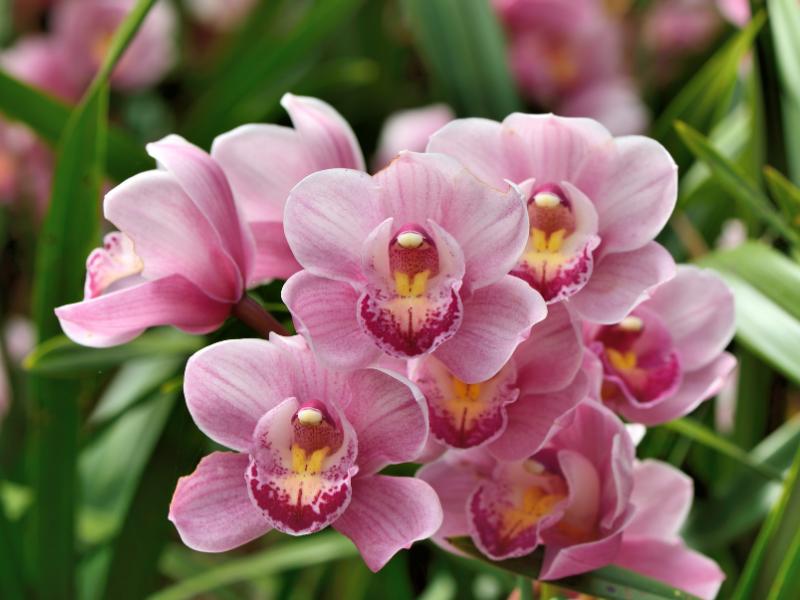
Orchids are remarkable and charming flowers that will uplift any space you place them in, but according to Greek history, there’s much more to them.
But before we delve into the myths about these flowers, here’s some general info about them:
Scientific name: Orchidaceae
Native habitat: Tropics of Asia and Australia
Growth rate: Slow grower
Size: 20 – 90 cm (8 in – 3 ft) tall and 30 cm (1 ft) wide
Toxicity: Non-toxic
These white, pink, purple, green, blue, yellow, orange, or red flowers will decorate your home from spring to fall.
It would be best to water your orchids twice weekly when the weather is warm and weekly during winter. Plant them in an orchid mix, which you need to change yearly to ensure the right nutrition for your plants; this will also save you a lot of trouble with fertilization. Finally, don’t place your plants in direct sunlight since orchids are susceptible to sunburn, and you’ll end up harming your flowers.
Orchids are delicate flowers, and there’s a high likelihood you might encounter a situation where your orchids seem to be dying. This is usually a result of improper fertilization, temperature, lighting, or watering.
As much as we label these flowers as delicate, they are far from that in Greek mythology. The Greek myth talks about Orchis, a demi-god, who tried to rape a priestess during the Dionysia, a celebration that honors pleasure, wine, and the god of fertility, Dionysus.
Due to this despicable act, wild beasts mutilated Orchis, and orchids began growing where his dismembered body fell. The two tubers on an orchid plant symbolize the sin Orchis committed, while the plant’s luxurious flower heads represent Orchis’ beauty.
According to the Greeks, the tubers contained aphrodisiac properties that could determine an unborn baby’s sex (the child would be a girl or boy, depending on whether the mother ate small tubers or the father ate large ones).
7. Larkspur
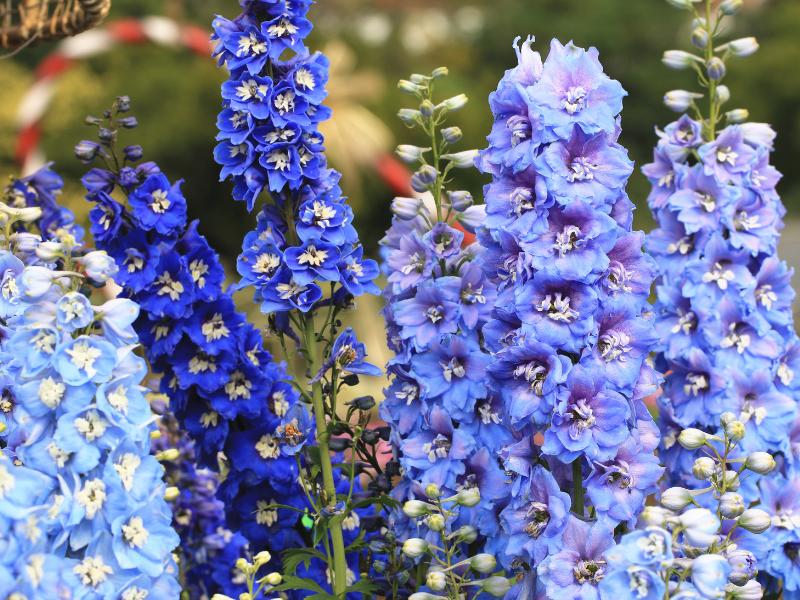
The Larkspur is a blue flower that you might mistake for a creeping bougainvillea, such as Crete or Santorini while touring the Greek islands. Still, it has many charms.
Here is some general info regarding this plant:
Scientific name: Delphinium
Native habitat: Native all over the Northern Hemisphere
Growth rate: Moderate growth rate
Size: 90 – 120 cm (3 – 4 ft) tall and 30 cm (1 ft)
Toxicity: Toxic
Larkspur may be toxic, but that doesn’t stop it from adorning your garden with its beautiful indigo, purple, and pink blossoms.
The plant thrives in full sun, but you should provide it some shade if the temperatures are extremely high. Plant it in loose, light, and well-draining soil and water it once or twice weekly. Irrigate it with 2.5 cm (an inch) of water, but adjust the amount depending on the rainfall.
Larkspur has a pretty dark myth compared to the other ones. Achilles had lost in the Battle of Troy, and his mother requested that the bravest warrior be granted his armor. There were two men who fit this requirement: Ulysses and Ajax.
In the end, the Greeks chose Ulysses as the rightful inheritor of Achilles’ armor, which made Ajax boil with rage; his fury became more apparent when he committed suicide by throwing himself on his sword, and dainty larkspur flowers began growing where his blood had spilled.
8. Saffron Crocus
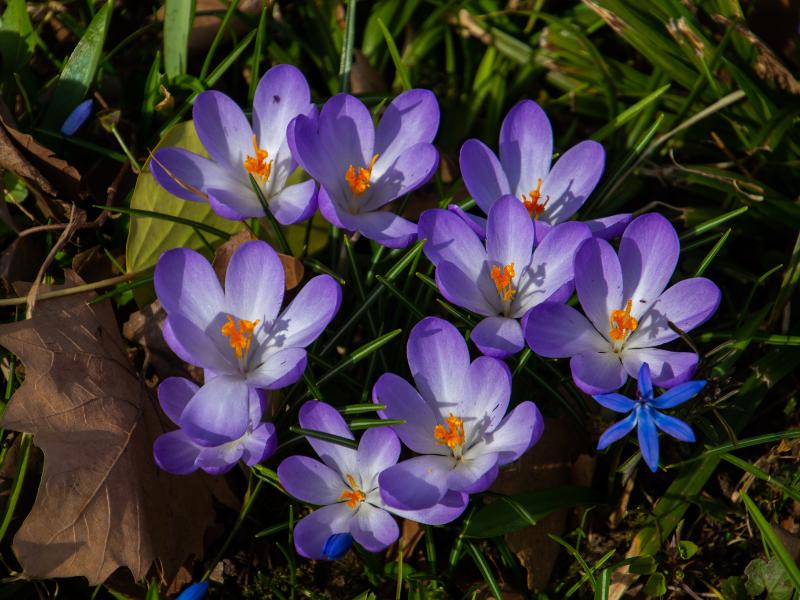
The saffron crocus has a lovely lavender-colored crown that exemplifies universal beauty, and its myth is all about faithful love.
Here are some general details regarding this plant:
Scientific name: Crocus sativus
Native habitat: The Middle East and Greece
Growth rate: Fast grower
Size: 10 cm (4 in) tall
Toxicity: Toxic
The only thing you need to do with the crocus is to plant it in well-draining soil like sandy loam and fertilize it once yearly. You need only water the plant if there hasn’t been rainfall for 3 – 5 days during its growing season and let it enjoy full sun conditions.
The first myth about Crocus is similar to that of Hyacinthus. However, this one involves the lovers Crocus and Hermes instead of Hyacinthus and Apollo, as depicted in the Hyacinthus myth. Hermes threw a discus that killed Crocus, making the herald of gods turn Crocus into a flower. The three droplets of his blood became the crocus flower’s stains.
The other myth tells a story of love between a nymph, Smilax, and the mortal, Crocus. The gods didn’t approve of this relationship at all, and they turned Smilax into bindweed and Crocus into a flower.
9. Iris
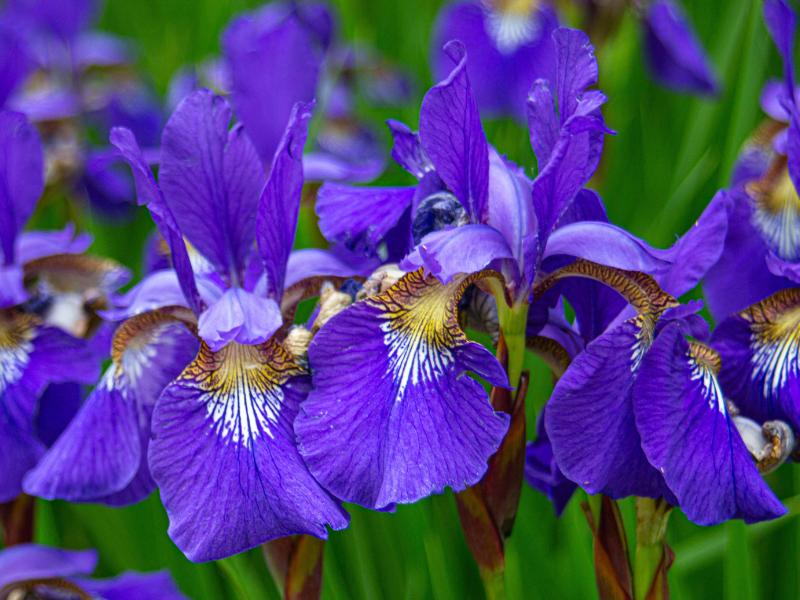
Iris has a pretty lovely story in Greek mythology, and it’s not gory or bloody at all!
Let’s take a look at some general specifics about this flower at first:
Scientific name: Iris
Native habitat: Europe, Western Asia, and North Africa
Growth rate: Moderate
Size: Approximately 90 cm (3 ft) tall
Toxicity: Toxic
Irises have many beautiful colors, and the best thing about them is you have a choice of which color you want to adorn your garden with, be it blue, yellow, orange, red, pink, white, or even black!
Plant your irises in well-draining and fertile mediums and irrigate your flowers at least once weekly; ensure you water your plants once the topsoil is dry. Place them in a spot where they can receive about six hours of sunlight daily, but provide some shade to protect them if the temperatures rise significantly.
Iris was the goddess of the rainbow and acted as a messenger for Hera and Zeus whenever they wanted to communicate with mortals. Iris used the rainbow as a bridge between the heavens and Earth, while some myths refer to the rainbow as her cloak.
The Greeks incorporated the myth into their tradition, and most people would plant irises on graves to entice the rainbow goddess to help their loved one’s souls to cross over to the heavens.
10. Gladiolus
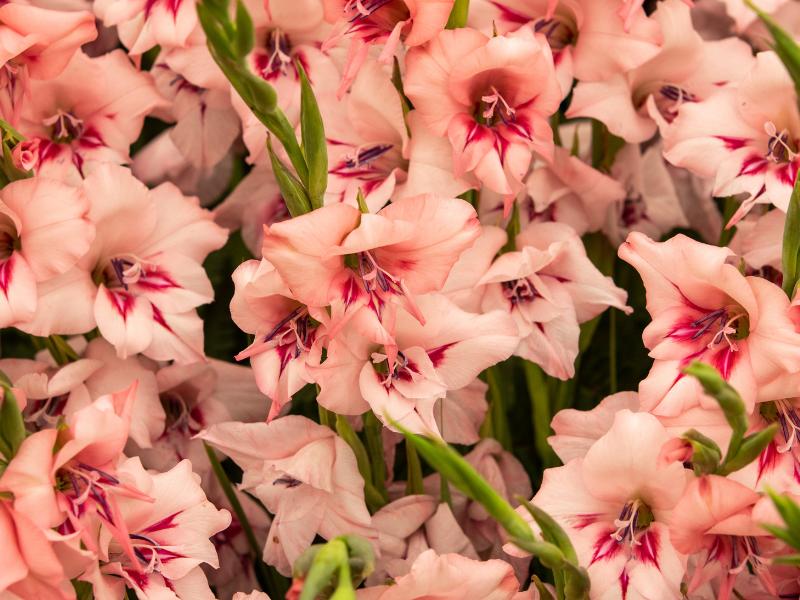
Gladiolus is a beautiful flower that’ll make a great companion plant for hyacinths, but they have different origin stories. Gladiolus’ myth is all about greed and not the common love stories.
Here is some general information about gladiolus:
Scientific name: Gladiolus
Native habitat: The Mediterranean, Arabian Peninsula, Africa
Growth rate: Slow-growing
Size: 0.6 – 1.5 m (2 – 5 ft) tall
Toxicity: Toxic
Gladiolus flowers will turn your garden into a flower haven, and there are many colors you can choose from, including white, red, pink, yellow, or green.
Grow your flowers in a well-draining and fertile substrate, water them with 2.5 cm (1 in) of water weekly, and expose them to full sun.
The Greek myth about gladiolus involves the goddess of harvest, Demeter, and a greedy and godless man, Erysichthon. Demeter loved the woods of Thessaly, but this didn’t stop Erysichthon from cutting the trees in the sacred place. When a few god-fearing men tried to stop him, Erysichthon beheaded one of them, making Demeter create small, sword-shaped gladiolus flowers where the blood spilled.
The story isn’t over yet! Demeter didn’t just let Erysichthon get away with this heinous act. The goddess inflicted the man with famine to the point that he had to sell his daughter to buy more food for his unsatisfied hunger. No one could do anything to help him, and he eventually ended up devouring himself.
11. Rose

Rose is another flower you’ll find at events or even in the streets as they are sold. It’s always lovely to have a rose bouquet around, so knowing how to extend their shelf life and how long roses can last without water is critical; you need only change the water regularly, feed them with flower food or sugar, and don’t expose them to too much sunlight.
Let’s take a look at the general specifics about roses:
Scientific name: Rosa
Native habitat: Northwest regions of Africa, Europe, North America, and Asia
Growth rate: Fast growing
Size: The smallest rose grows up to 15 – 30 cm (6 – 12 in), and the largest one up to 6 m (20 ft)
Toxicity: Non-toxic
Plant your roses in a well-draining, humus-amended, and nutrient-rich substrate, provide them with 6 hours of sunlight daily (preferably during morning hours), and give them 15 – 19 l (4 – 5 gallons) of water weekly.
Roses have two narratives in Greek mythology. The first story involves the goddess Aphrodite and her lover, Adonis. One day, a wild boar mortally wounded Adonis, and when Aphrodite found him, she shed tears that mixed with his blood, making a red rose bush spring from the soil.
The second story involves Chloris, the goddess of flowers, and it claims that roses would fall from the mouth of the goddess whenever she spoke.
There’s also another myth about the origin of roses that involves Chloris. In this version, the goddess came across the lifeless body of a hypnotically beautiful nymph, whom she transformed into a flower after being amazed by her incredible beauty.
Other gods also chipped in and helped in different ways: Apollo allowed the sun to shine and help the flower bloom, Zephyrus blew the wind and made the sky clear, Dionysus provided nectar, which made the rose have a sweet fragrance, and Aphrodite embellished the flower with beauty.
12. Bay Laurel
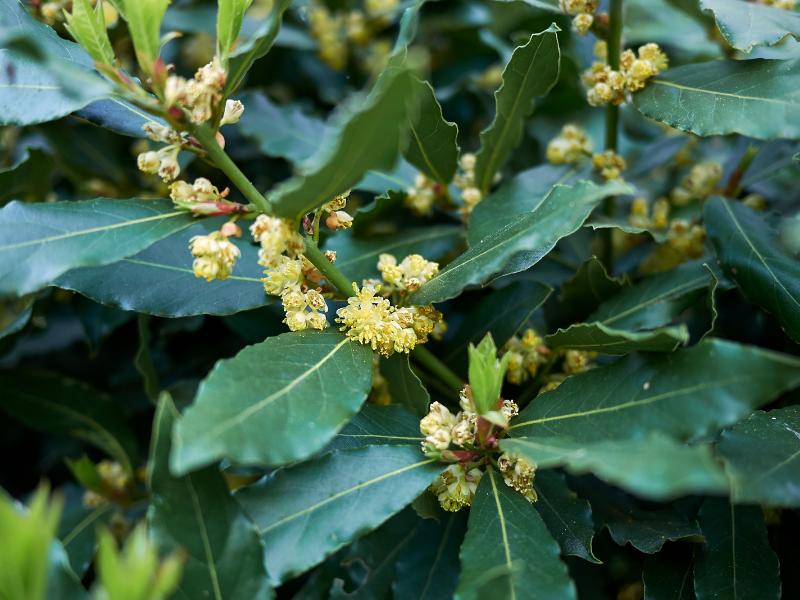
Laurel is a flower that you might have seen in movies about gladiators and Romans or maybe even used in your cooking, but it holds a special place in Greek history.
However, let’s first review some general info about this flower before traveling back in time:
Scientific name: Laurus nobilis
Native habitat: The Mediterranean
Growth rate: Slow growing
Size: It can grow up to 6 m (20 ft)
Toxicity: Mildly toxic to pets
Most growers usually cultivate bay laurel for its leaves, but you can see pale yellow blooms of this plant in late spring or early summer. Bay laurel isn’t demanding at all; you need only plant in any soil so long as it’s well-draining. The plant thrives in full sun, but you should provide it with some shade when the temperatures significantly rise.
Lastly, laurels don’t do well in wet soil, so you must irrigate the plant when the soil’s top 5 cm (2 in) is dry.
Laurel’s origin story in Greek mythology is quite popular, and it revolves around Daphne, a Niad nymph, and Apollo, the sun god. According to the myth, Apollo mocked the god of love’s (Eros) archery abilities, who, in turn, shot the sun god with an arrow that made him fall deeply in love with Daphne. Conversely, Eros shot Daphne with an arrow that made her loathe any romantic desires or gestures towards her.
Apollo kept chasing Daphne to the point that she had to tell her father, Peneus, the river god, to intervene since she was always tired of running away. Peneus then decided to transform his daughter into a laurel.
Apollo treasured the tree and wore a laurel crown. The story also mentions that the sun god made the tree evergreen, which granted the nymph immortality.
13. Poppy
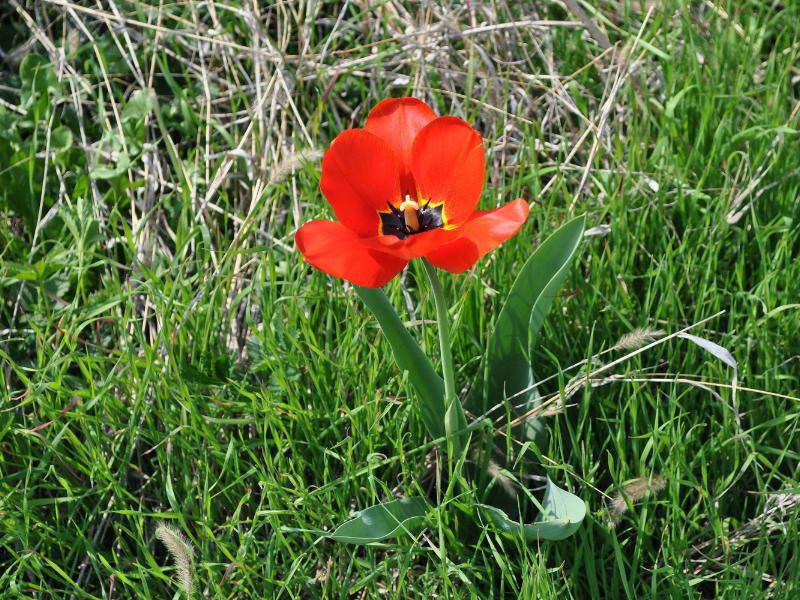
This is another flower whose myth involves the goddess of harvest, Demeter.
However, let’s first look at general information about this plant:
Scientific name: Papaver
Native habitat: North Africa, Euroasia
Growth rate: Fast grower
Size: 30 – 35 cm (1 – 1.2 ft)
Toxicity: Toxic
Poppies flower in mid-to-late spring, from April to June. Although most pictures of poppies we often see tend to have red flowers, this flower has other various shades such as purple, white, and pink.
Poppies have easy care requirements. Plant your flowers in a well-draining substrate, provide them with at least 6 – 8 hours of sunlight daily, and irrigate them occasionally if you live in an area that doesn’t receive a lot of rainfall.
People have been associating poppies with sleep since time immemorial, and this is one of the main reasons it revolves around the Greek gods Thanatos, the god of death, Morpheus, the god of dreams, and Hypnos, the god of sleep.
However, it’s believed that the goddess Demeter is the one who actually created the flower (or was created for her) to help her fall asleep after Persephone, her daughter, got abducted. According to the story, poppies used to spring from below Demeter’s feet whenever she took a step.
14. Lily
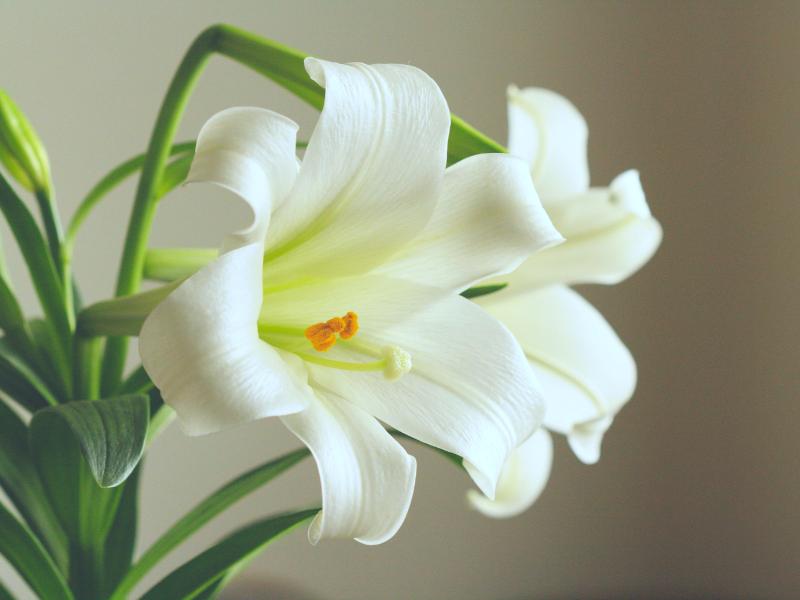
Lilies aren’t found in Greece only; they are also among the most popular flowers in Spain. Their story in Greek mythology is quite interesting, and we’ll learn all about it in a minute.
But first, let’s look at some general information about lilies:
Scientific name: Lilium
Native habitat: Temperate regions of the Northern Hemisphere
Growth rate: Slow to moderate growth rate
Size: 60 – 180 cm (2 – 6 ft), depending on the variety
Toxicity: Toxic
You’ll enjoy the various colors of lilies from summer to fall, but it depends on the type. Plant your flowers in well-draining, nutrient-rich soil and irrigate them with 2.5 cm (1 in) of water weekly whenever there’s no rain. Lilies thrive in the sun, and you need to provide them with at least six hours of sunlight daily, or else you won’t have any beautiful flowers to admire.
The myth about lilies is quite profound and involves Zeus’ infidelity. Zeus seduced Alcmene, a mortal princess, who bore him a son, Hercules. Zeus wanted to bring Hercules closer to divinity, so he devised a plan to make Hera nurse his son.
Zeus put Hera to sleep and brought his son to feed on her milk. However, the plan didn’t go as planned, and Hera woke up, shoving the baby away with so much force that the milk continued to come out. According to legend, the spilled milk formed the Milky Way, and drops that landed on Earth transformed into lilies.
15. Sunflower
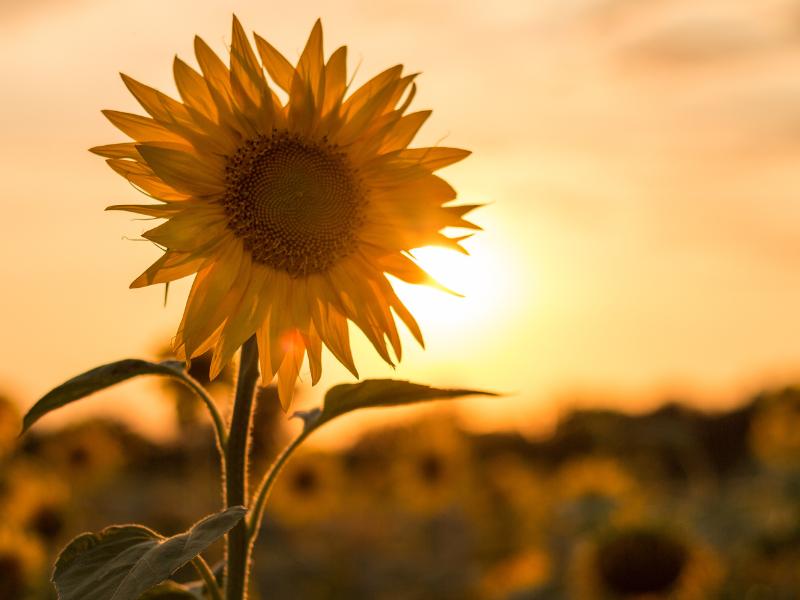
Most people don’t know sunflowers have a connection with Greece, but their place in Greek history is quite interesting.
Here is the general info:
Scientific name: Helianthus annuus
Native habitat: The southern and Central USA, Mexico
Growth rate: Fast growing
Size: It can grow up to 0.9 – 4.5 m (3 – 15 feet)
Toxicity: Non-toxic
Sunflowers blossom in spring and fall, and you can grow them with sunflower companion plants such as lavender, basil, cucumbers, tomatoes, etc., so there’s no need to worry about space.
Plant the flower in a nutrient-rich, well-draining substrate with organic material and provide it with plenty of sunlight, just as its name suggests. Irrigate the plant once a week with 2.5 cm (1 in) of water if rainfall is limited in your region, and ensure the soil is fertile; you can always add a diluted fertilizer or some compost occasionally.
The Greek myth about sunflowers involves Helios, a god who drew the sun with his chariot, and Clytie, a water nymph deeply in love with the god. However, Helios didn’t have the same feelings for her. Instead, he was in love with Leucothoe, a mortal Persian princess.
Driven with jealousy, Clytie reported the relationship of the two lovers to Leucothoe’s father, King Orchamus, who was deeply disappointed in his daughter due to the circumstances that surrounded their love for each other (Helios had apparently deceived and seduced Leucothoe and claims about attempted rape were issued against him). Orchamus couldn’t bear the shame his daughter brought to the family and buried her alive in the sand.
Clytie thought Leucothoe’s death would now give her a chance with Helios, but he despised her more and became more distant. Clytie was driven mad by this rejection, and she sat naked on the ground, refusing any food or water and only looking up to the sun as Helios dragged it with his solar chariot (who never looked back at her).
For nine days, she stared at the sun, and after the days had passed, she turned into a sunflower, which turned its head following the sun, still showing her undying love for Helios.
Commonly Asked Questions
We’ve covered numerous things about popular Greek flowers and their myths, but there’s still more to learn.
This section will answer common questions that most people have about Greek flowers.
Which flower represents Greece?
Laurel is the flower that people use to represent Greece. As mentioned earlier, it’s the flower that the sun god, Apollo, made a crown out of and always wore to be close to the nymph he loved, Daphne.
The crown was also presented to the Pythian Games’ winners, which were held to honor Apollo.
Which popular flower can I gift on Mother’s Day in Greece?
Normally, chrysanthemums are flowers that most people give on a traditional Mother’s Day in Greece. The Greeks never celebrated Mother’s Day; instead, they held celebrations to honor Rhea, who has been referenced as the mother of numerous gods in Greek mythology.
Still, you can give carnations, roses, and other popular flowers like those we’ve discussed as gifts; I’m pretty sure any flower you choose will fit the occasion!
Final Remarks
We’ve covered some of the most popular Greek flowers in this article and their myths. The mythological narratives offer insights into the causes that led to the origin of these flowers, including protection, honor, grief, and love.
We’ve also provided some helpful tips on how to care for these flowers to assist in growing them without any fuss. The good thing about these flowers is they aren’t demanding, and you can mystify your garden with them any time you want!
I hope you’ll achieve the mythological garden you desire; happy planting!
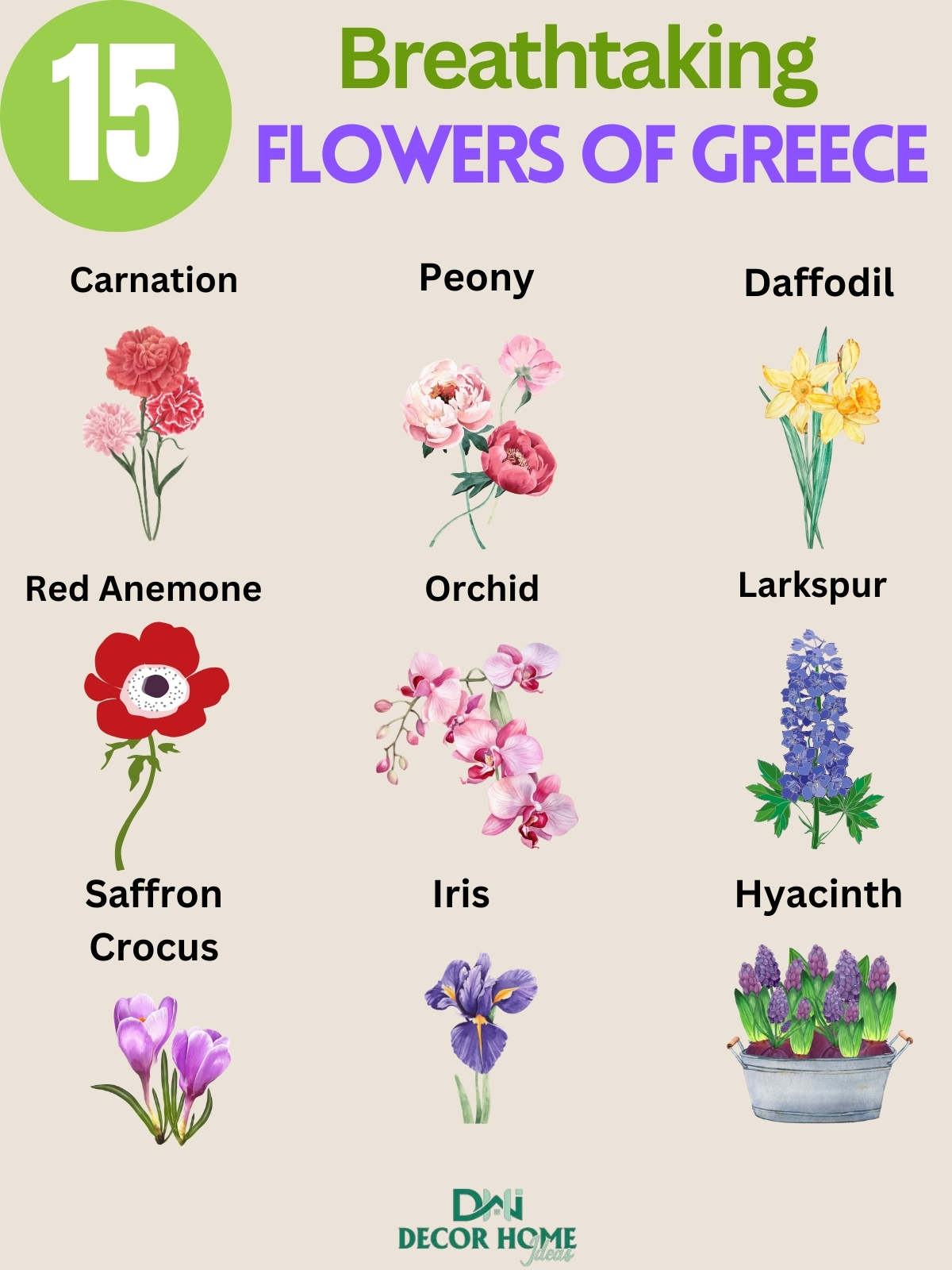
Greece is home to stunning flowers, many of which are tied to rich mythology.
The red anemone is linked to Aphrodite’s sorrow, while the iris symbolizes the messenger goddess Iris.
Saffron crocus, revered since ancient times, was associated with Zeus. Orchids, daffodils, and peonies were sacred to Greek deities, adding both beauty and legend to the landscape. A truly mythical floral paradise!


